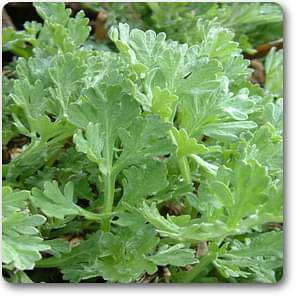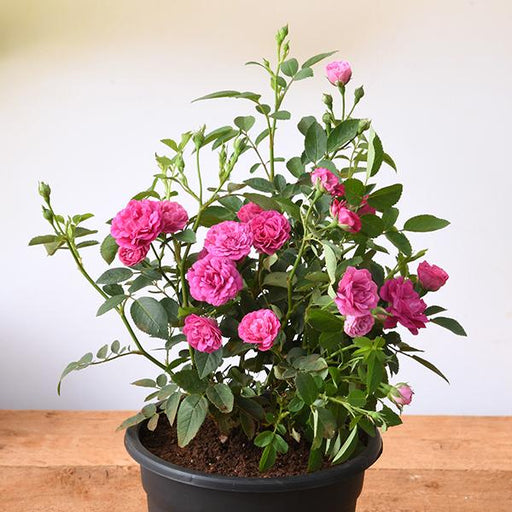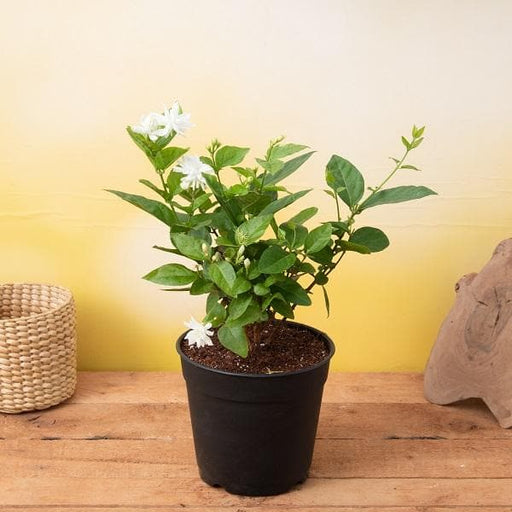
Artemisia absinthium - Plant
(MRP Inclusive of all taxes)
- Shipping ₹79 for entire order
- Dispatch in 7 days
- Country of origin: India

(MRP Inclusive of all taxes)
 Save 29%
Save 29%
Air Purifier Money Plant with Pot The Air Purifier Money Plant, also known as Pothos or Epipremnum aureum, is a stunning indoor plant that...
View full details
 Save up to 15%
Save up to 15%
Peace Lily, Spathiphyllum - Plant The Peace Lily, scientifically known as Spathiphyllum, is a stunning houseplant celebrated for its elegant white...
View full details
 Save 25%
Save 25%
Jasminum sambac, Mogra, Arabian Jasmine - Plant Jasminum sambac, commonly known as Mogra or Arabian Jasmine, is a fragrant flowering plant...
View full details
 Save 18%
Save 18%
Combo Constituents Includes the Parijat Tree (Night-Flowering Jasmine), a culturally significant plant with fragrant flowers. Description The Pari...
View full details
 Save 25%
Save 25%
Miniature Rose, Button Rose (Any Color) - Plant The Miniature Rose, also known as the Button Rose, is a charming and compact flowering plant that ...
View full details Save 25%
Save 25%
Damascus Rose, Scented Rose (Any Color) - Plant The Damascus Rose, also known as Rosa damascena, is a timeless symbol of beauty and romanc...
View full details
 Save 17%
Save 17%
Beautiful Fragrant Mogra, Arabian Jasmine Plant with Pot The Beautiful Fragrant Mogra, also known as Arabian Jasmine (Jasminum sambac), is...
View full details Save 15%
Save 15%
Pack of Vermicompost and Neem Cake for House Plants Transform your indoor garden with our premium Pack of Vermicompost and Neem Cake, spec...
View full details
Pack of Plant Growth and Flower Boosters Unlock the full potential of your garden with our Pack of Plant Growth and Flower Boosters! This ...
View full details Save 38%
Save 38%
Combo of Jeevamrut and Neem Raksha for Easy Growth and Protection of Houseplants Transform your indoor garden with our exclusive combo of ...
View full details Save 22%
Save 22%
Plant Nutrients Kit (Pack of 16) for a Healthy Garden Transform your garden into a lush paradise with our Plant Nutrients Kit, featuring 1...
View full details Save 16%
Save 16%
Combo of Top Plant Fertilizers Elevate your gardening game with our exclusive Combo of Top Plant Fertilizers, featuring two bags of premiu...
View full details Save 24%
Save 24%
Pack of 4 Additives to Make Soil Healthy and Nutrient Rich Transform your garden into a thriving ecosystem with our Pack of 4 Additives de...
View full details Save 30%
Save 30%
Transform your gardening experience with our premium Combo of Perlite and Vermiculite. This unique blend is designed to enhance soil aeration and ...
View full details Save 27%
Save 27%
Combo of 2 Vermicompost and Cocopeat - Enrich Your Soil Naturally! Transform your garden into a thriving ecosystem with our Combo of 2 Ver...
View full details
 Save 35%
Save 35%
Best 6 Plants for Perfect Indoor Garden Transform your living space into a lush oasis with our curated collection of the Best 6 Plants for a...
View full details
 Save up to 50%
Save up to 50%
Mini Succulent Garden Pack Transform your space with our Mini Succulent Garden Pack, featuring a delightful collection of 4 any variety beautiful s...
View full details
 Save 30%
Save 30%
5 Best Fragrant Plants Transform your garden or indoor space into a fragrant paradise with our curated selection of the 5 Best Fragrant Plants. Th...
View full details
 Save 24%
Save 24%
Set of 2 Bonsai Looking Grafted Adeniums Transform your indoor or outdoor space with our exquisite Set of 2 Bonsai Looking Grafted Adenium...
View full details Save 45%
Save 45%
Top 4 Die Hard Succulents Pack Transform your indoor or outdoor space with our Top 4 Die Hard Succulents Pack, featuring a curated selecti...
View full details
 Save 30%
Save 30%
5 Best Indoor Plants Pack Transform your living space into a lush oasis with our '5 Best Indoor Plants Pack.' This carefully curated collection fe...
View full details
 Save 25%
Save 25%
Set of 4 Evergreen Air Purifier Plant Pack Transform your indoor space into a lush, green oasis with our Set of 4 Evergreen Air Purifier Pla...
View full details| SrNo | Item Name |
|---|---|
| 1 | Artemisia absinthium - Plant |
Artemisia absinthium, commonly known as Wormwood, is a perennial herbaceous plant renowned for its distinctive silvery-green foliage and aromatic properties. This ancient plant has been used for centuries in traditional medicine and as a key ingredient in the production of absinthe, a famous alcoholic beverage. With its unique flavor profile and historical significance, Wormwood is a fascinating addition to any garden or herbal collection.
Wormwood is not just a beautiful plant; it holds a significant place in history and culture. Its use dates back to ancient civilizations, where it was valued for its medicinal properties and as a flavoring agent. The plant is also known for its role in the production of absinthe, which was once banned in many countries due to its psychoactive properties. Today, Wormwood is celebrated for its unique taste and potential health benefits.
This hardy plant is drought-resistant and thrives in poor soil conditions, making it an excellent choice for low-maintenance gardens. Its striking foliage and aromatic scent not only enhance garden aesthetics but also attract beneficial insects, promoting biodiversity. Additionally, Wormwood has been studied for its potential anti-parasitic and anti-inflammatory properties, adding to its appeal as a medicinal herb.
Artemisia absinthium is a resilient plant that can thrive in poor soil conditions, making it an excellent choice for sustainable gardening. Its ability to attract beneficial insects helps promote a healthy ecosystem, while its drought resistance contributes to water conservation efforts. By incorporating Wormwood into your garden, you can support biodiversity and create a more sustainable environment.
If you think this plant is just a pretty face, think again! Artemisia absinthium, or wormwood, is a powerhouse of benefits. Known for its medicinal properties, it’s been used to treat everything from digestive issues to fevers. Plus, it’s a natural insect repellent! So, while you’re sipping your absinthe cocktail, remember that this plant is not just a party trick; it’s also a health hero.
Ready to channel your inner green thumb? Growing Artemisia absinthium is easier than finding a good excuse to skip the gym. This hardy perennial thrives in poor soil and loves full sun, making it the perfect plant for those who want to garden without the fuss. Just plant it, water it occasionally, and watch it flourish like your friend who always seems to have their life together.
This isn’t just a plant; it’s a multi-tasking marvel! Artemisia absinthium has a variety of uses, from culinary delights to herbal remedies. It’s famously known for its role in absinthe, the infamous green fairy that has inspired countless artists and writers. But it doesn’t stop there; it can also be used in teas, tinctures, and even as a flavoring in certain dishes. Talk about versatility!
Caring for Artemisia absinthium is like having a pet rock—minimal effort, maximum reward! This resilient plant doesn’t require much pampering. Just ensure it gets plenty of sunlight and occasional watering, and it’ll thrive like a diva in a sunlit room. Plus, it’s drought-tolerant, so you can forget about it for a while without feeling guilty.
Step back in time and discover the rich history of Artemisia absinthium! This plant has been around since ancient times, used by the Greeks and Romans for its medicinal properties. It’s also been a muse for artists and writers, inspiring tales of mystery and intrigue. So, when you think of wormwood, remember it’s not just a plant; it’s a historical icon with a flair for the dramatic.
Who knew wormwood could spice up your culinary adventures? Artemisia absinthium isn’t just for cocktails; it can add a unique flavor to various dishes. Use it sparingly in sauces, marinades, or even as a garnish. Just be careful not to overdo it—too much can turn your dish from gourmet to “what on earth is that?” in no time!
Let’s talk about the green fairy! Artemisia absinthium is the star ingredient in absinthe, the notorious spirit that has captivated drinkers for centuries. Known for its high alcohol content and anise flavor, absinthe has a reputation for being the drink of choice for artists and bohemians. So, if you’re feeling adventurous, why not indulge in a little absinthe and toast to the plant that made it all possible?
If you’re looking for a natural pest control solution, look no further! Artemisia absinthium is a natural insect repellent, keeping those pesky bugs at bay. Plant it in your garden, and watch as it works its magic, creating a bug-free zone. It’s like having a tiny bouncer for your plants, ensuring only the good guests get in!
Step aside, modern medicine; Artemisia absinthium has been a go-to remedy for centuries! Traditionally used to treat digestive issues, fevers, and even as a tonic, this plant has a long-standing reputation in herbal medicine. So, if you’re feeling under the weather, consider giving this ancient remedy a try—just don’t forget to consult with a professional first!
Who knew wormwood could be so aromatic? Artemisia absinthium is not just a pretty plant; it’s also a fragrant delight! Used in aromatherapy, its essential oil can promote relaxation and relieve stress. So, if you’re feeling overwhelmed, a little whiff of this herb might just do the trick. Just remember, moderation is key—no one wants to smell like a distillery!
If you’re looking to add some flair to your garden, Artemisia absinthium is your go-to plant! With its silvery-green foliage and unique aroma, it’s a showstopper that will have your neighbors green with envy. Plus, it’s low-maintenance, drought-tolerant, and attracts beneficial insects. So, get ready to impress with this stunning addition to your garden!
Artemisia absinthium, commonly known as wormwood, is a perennial herb famed for its bitter taste and historical use in absinthe. This feisty plant boasts silvery-green leaves and yellow flowers, making it a striking addition to any garden. Just don’t expect it to mix well with your cocktails unless you’re aiming for a very herbal experience!
Wormwood thrives in well-drained, sunny spots, often found in Europe, Asia, and North America. It’s like that friend who loves the spotlight and can’t resist a good sunbath. Just plant it in your garden, and it’ll flourish, spreading its aromatic charm while keeping the pests at bay. Talk about a multitasking herb!
Beyond its notorious role in absinthe, wormwood has been used in traditional medicine for digestive issues and as a natural insect repellent. It’s like the Swiss Army knife of herbs—versatile and a bit edgy. Just remember, moderation is key; too much wormwood can lead to some rather wild side effects!
While wormwood has its benefits, consuming it in large quantities can lead to toxicity. Think of it as that spicy dish you love but can’t handle too much of. Always consult a healthcare professional before diving into the wormwood world, especially if you’re considering it for medicinal purposes. Safety first, folks!
Growing wormwood is as easy as pie—if pie were a resilient, drought-tolerant herb. Plant it in well-drained soil, give it plenty of sunlight, and watch it thrive. Just be prepared for it to spread like gossip at a family reunion. Regular pruning helps keep it in check and looking fabulous!
Absolutely! Wormwood is like the bouncer of your garden, keeping unwanted pests at bay with its bitter aroma. It’s particularly effective against mosquitoes and other pesky critters. Just plant it strategically, and let it do its thing. Your outdoor soirées will be much more enjoyable without the uninvited guests!
While wormwood can be beneficial, it can also cause side effects like nausea, vomiting, and even seizures in excessive amounts. It’s the herb that can turn from friend to foe if you’re not careful. Always use it wisely, and remember: moderation is the name of the game when it comes to this potent plant!
Yes, wormwood has a long history in traditional medicine, often used for digestive issues and as a tonic. It’s like that wise old sage in your herbal cabinet, offering advice and remedies. However, always consult a professional before using it medicinally, as its potency can be a double-edged sword!
Wormwood can be grown indoors, but it craves sunlight like a diva at a concert. Ensure it gets at least six hours of bright light daily, and provide well-drained soil. Just be prepared for its strong aroma to fill your space—your home might start smelling like a herbal apothecary!
Harvesting wormwood is a breeze! Snip the stems just above the leaves when the plant is in full bloom. This not only encourages new growth but also gives you a fresh supply of this aromatic herb. Just remember to wear gloves; its bitter taste is best left to culinary adventures, not your fingers!
Yes, Artemisia absinthium is legal in most places, but the absinthe made from it can be a different story. Regulations vary by country, so check your local laws before indulging in that green fairy. Just remember, enjoying wormwood in moderation is key—no one wants a wild night out with the absinthe!
To keep your wormwood fresh, store it in a cool, dark place in an airtight container. Think of it as giving your herb a cozy little home away from the light. Dried wormwood can last for months, but fresh leaves are best used within a week. Keep it happy, and it’ll reward you with flavor!